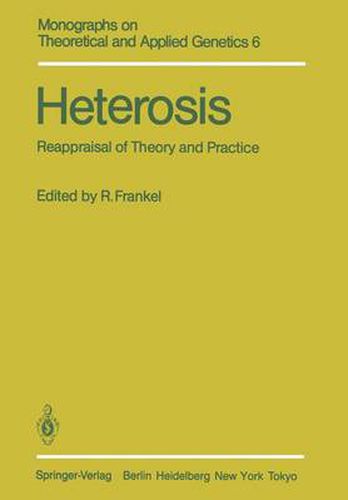Readings Newsletter
Become a Readings Member to make your shopping experience even easier.
Sign in or sign up for free!
You’re not far away from qualifying for FREE standard shipping within Australia
You’ve qualified for FREE standard shipping within Australia
The cart is loading…






This title is printed to order. This book may have been self-published. If so, we cannot guarantee the quality of the content. In the main most books will have gone through the editing process however some may not. We therefore suggest that you be aware of this before ordering this book. If in doubt check either the author or publisher’s details as we are unable to accept any returns unless they are faulty. Please contact us if you have any questions.
When trying to solicit authors for this book it became apparent that the causal factors for heterosis at the physiological and biochemical level are today almost as obscure as they were 30 years ago. Though biometrical-genetical analyses point to dispersion of complementary genes - not overdominance - as the major cause of the phenomenon, plant breeders’ experience still suggests a cautious, pragmatic approach to the dominance-overdominance controversy in breeding hybrid cultivars. Thus we are faced with a striking discordance between our limited comprehension of the causal factors and mechanism of heter osis on the one hand, and the extensive agricultural practice of utiliza tion of hybrid vigor on the other. Such utilization is the result of the economic value of hybrid combinations displaying superior yields and qualities as well as stability of performance, of benefits derived in breeding programs, and of the enhanced varietal protection of proprietary rights. No comprehensive and critical analysis of the phenomenon of heterosis in economic plants has been published for the last three decades since the now classical book Heterosis, edited by J . W. Gowen (Iowa State College Press, Ames, Iowa, 1952). The present book attempts to fill the gap and to assess the status of our present knowl edge of the concept, the basis, the extent, and the application of heterosis in economic plants.
$9.00 standard shipping within Australia
FREE standard shipping within Australia for orders over $100.00
Express & International shipping calculated at checkout
This title is printed to order. This book may have been self-published. If so, we cannot guarantee the quality of the content. In the main most books will have gone through the editing process however some may not. We therefore suggest that you be aware of this before ordering this book. If in doubt check either the author or publisher’s details as we are unable to accept any returns unless they are faulty. Please contact us if you have any questions.
When trying to solicit authors for this book it became apparent that the causal factors for heterosis at the physiological and biochemical level are today almost as obscure as they were 30 years ago. Though biometrical-genetical analyses point to dispersion of complementary genes - not overdominance - as the major cause of the phenomenon, plant breeders’ experience still suggests a cautious, pragmatic approach to the dominance-overdominance controversy in breeding hybrid cultivars. Thus we are faced with a striking discordance between our limited comprehension of the causal factors and mechanism of heter osis on the one hand, and the extensive agricultural practice of utiliza tion of hybrid vigor on the other. Such utilization is the result of the economic value of hybrid combinations displaying superior yields and qualities as well as stability of performance, of benefits derived in breeding programs, and of the enhanced varietal protection of proprietary rights. No comprehensive and critical analysis of the phenomenon of heterosis in economic plants has been published for the last three decades since the now classical book Heterosis, edited by J . W. Gowen (Iowa State College Press, Ames, Iowa, 1952). The present book attempts to fill the gap and to assess the status of our present knowl edge of the concept, the basis, the extent, and the application of heterosis in economic plants.